I Lost 40 Pounds Doing These 10 Things Every Day
Do you want to lose weight? All it takes is building healthy habits, says one expert. Chelsea Mae is "a Kiwi vegan mum" who lost 18kg (40 pounds) and kept them off "eating more food than ever," she explains in her bio. "I was vegan for years but never got lean until I learned about calorie density and the science of weight loss." Now she helps other women "lose weight, stop self-sabotaging, gain food freedom and get lean and slim." In one of her viral videos, she reveals "10 daily weight-loss habits that helped me on my journey to losing 40lbs!"
Weight Loss Boils Down to a Caloric Deficit
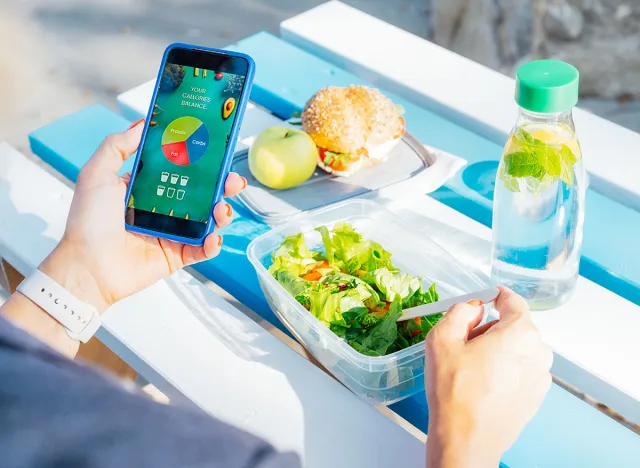
Chelsea starts off by prefacing that "all weight loss works by getting into a calorie deficit" and that most of her suggestions help by "reducing the overall calories that you eat or increasing the calories that you burn slightly, helping to increase your consistency so that you're not dieting one week and eating 1500 calories and then going for a huge binge the next week, eating 5,000 calories in a day so that you can actually over time get to whatever goal you have and build a lifestyle where you're no longer relying on motivation," she says.
These Habits Are Focused on Retraining Your Brain to Consume Less Calories
"Any kind of habit is really just the sum of millions and millions of tiny actions that your brain is now putting onto autopilot. And that's where we want to get to because it means that you don't need willpower anymore. And in order to create a habit, things have gotta be easy, they've gotta be satisfying, they've gotta be obvious, they've gotta be attractive," she notes, citing James Clear, "the guru on how to create habits" and author of Atomic Habits."
1. Stop Cooking with Oil

"The first thing is to stop cooking with oil," she says. "Oil is just so calorie dense that you can add hundreds if not thousands of calories a week when you use it in your cooking, or you eat it within foods like especially processed foods on a regular basis. And the reason it is so high in calories, even for a small amount, is you start with something like olives or nuts and seeds. You take out the water, which means that you've now got a smaller package of food for the same amount of calories 'cause water doesn't have calories. And then you take out the fiber, and you've got the same amount of calories as what you started with, but now it's even in a smaller package," she continues. "It's extremely condensed calories, which means that if you are cooking with oil and let's say you're starting some vegetables, you can have more calories from just the oil you are sauteing in than the veggies that that you're eating themselves."
Instead, Sautee with Water or Dry Roast
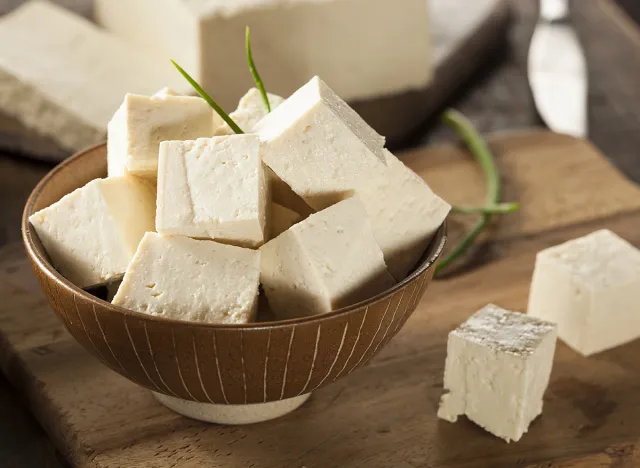
While she encourages eating avocado, nuts, seeds, tofu, and "all those other things that have fat in them," she suggests staying away from oil. Instead, she recommends sauteing with water, roasting veggies with baking paper, or dry roasting. "A lot of the time when you're cooking vegetables, you don't need to add any water because they have water in them. So if you put that lid on top, then it's not gonna stick because there's enough moisture trapped inside," she says.
2. Find a Core Vegetable That You Actually Like
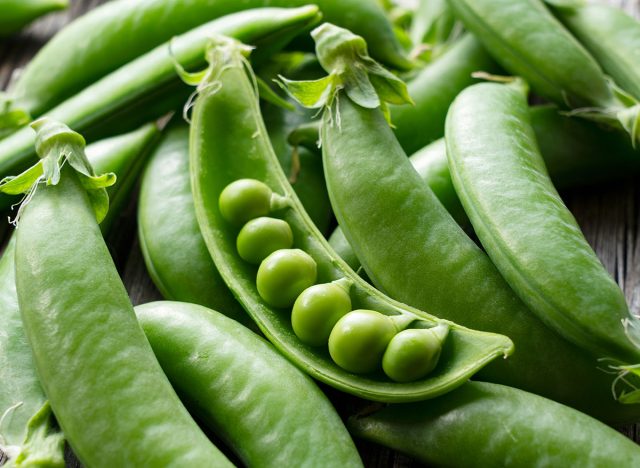
Her second habit? Buying vegetables "that you really enjoy and that you can have as a side or your core non-starchy vegetables on a daily basis," she says. "What I mean by this is to have something like broccoli or snap peas or baby carrots that you can have with pretty much every meal and that you don't need to think about how you're gonna prepare it. The pitfall that I see people making is that they will buy all the vegetables that they see in the shop, eggplant, leek, asparagus, lots of amazing things, but then they don't really know how to prepare it, or it takes a lot of time and effort to figure out what recipes that are going to go in. So the food ends up rotting in the fridge. If you find a core veggie that you really enjoy and that you can add to any meal, you're gonna remove a lot of decision fatigue, and you're going to be able to get your reps in order to do all those little action steps that mean that it's now autopilot," she continues. "So, for me, that's broccoli. I have a broccoli steamer, so I can cook up broccoli and have that as a side to pretty much every meal. Broccoli goes with pretty much everything. When we were in America traveling around, we did baby carrots, snack peas, and cherry tomatoes because I could prep them up in the morning, just put them all into a container, and then we could snack on them throughout the day. "
There Are Two Types of Veggies: The Ones She Cooks with and the Ones She Snacks On
She thinks of her veggies in two ways. "The first one is the veggies that I cook with. If I'm making a recipe and I'm using onion or leek or celery, then that's different from my core side or my core snacky veg. That is gonna just be my default. The more you can just not think about this, the more consistent you're going to get because the goal is to have a veg that you know that you like that you can add to your lifestyle that is not gonna require any extra thinking."
3. Add a Ton of Vegetables to Your Meal
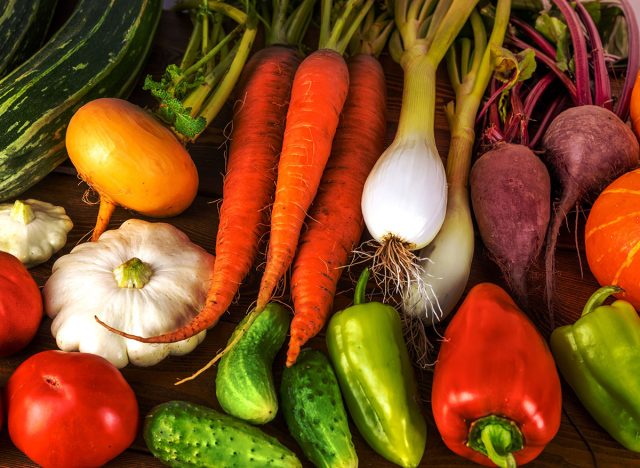
"Habit number three is to cook or create recipes where you are always adding a ton of veggies," she says. "This is different in my mind to having a core side or a core veggie that you're going to snack on because this is more about changing the way that you prepare the food that you throw together to make a recipe or to make a meal. And so this means every time that you look at a recipe, try something new, make a creamy pasta, or make a risotto, you are very intentional. Add half non-starchy vegetables to that, which is going to lower the calories without you feeling any extra hunger because you can eat a lot of bulk that way." Even when she is craving creamy pasta, "I can still make that great for weight loss because I'm offsetting the higher calorie elements by adding in bulky lower calorie elements.
This Habit Is a "Safety Net" for Building Habits
"I sometimes see people struggle online who know all the frameworks about how to lose weight, and they understand the principles, and they'll kind of struggle with this all-in or all-out behavior where they'll be really, really diligent and follow all these principles and then they'll go to eating a lot of processed food," she says. "This habit, I believe, is the safety net for that because if you are in the habit of eating a ton of veggies with every single meal," is that "you are never going to be either dieting or not. You are always gonna be on some kind of trajectory that is building the habits that get you to where you want to be," she says.
4. Prep a Core Starch
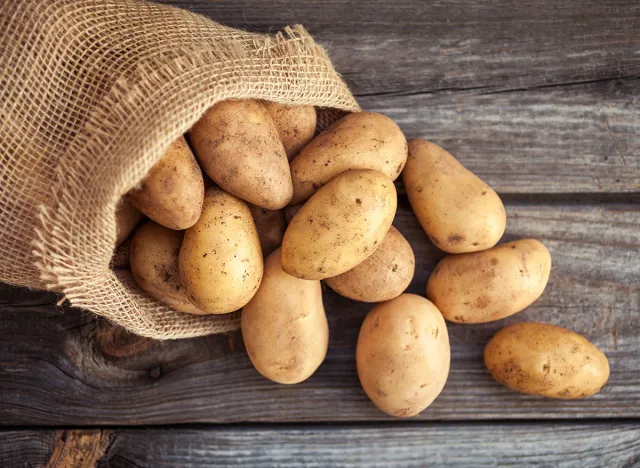
"Number four is to prep some kind of core starch," she says, listing "potato, rice, beans, quinoa, anything that is gonna be the bulk of the calories for your meal." She explains that she does a "rolling prep," so she will "cook up potatoes and then when I see myself getting low on them, I'm just gonna cook up more."
Here Are Some Hacks
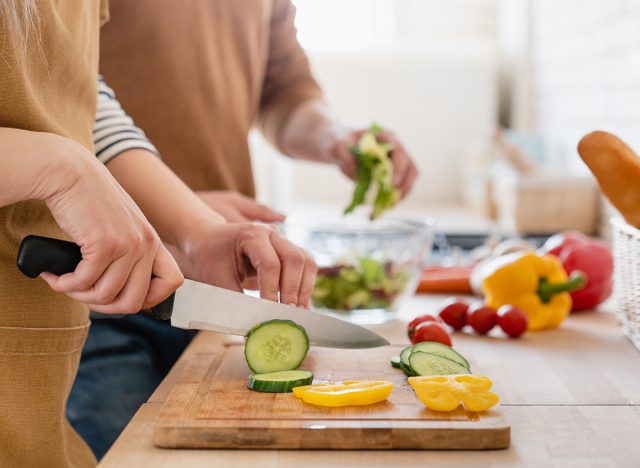
"I don't have to spend hours each week meal prepping because I just do it while I'm already cooking dinner, and I notice that my fridge is getting low. All we're trying to do here is make this as easy as possible. So choose something that is simple for you to prep, and that doesn't take longer than five minutes of actual effort," she says. You can buy frozen rice or quinoa or pre-scrubbed potatoes to "remove the barriers that may seem small but really do contribute to you not actually following through and doing it," she says. "Remember, we're trying to make this easy and obvious and satisfying. The more you can eliminate the need for willpower, the more likely you'll be able to have it."
5. Create 3 Core Meals That Take Under 5 Minutes to Make
"Number five is to create three core meals that you really enjoy that take five minutes or less that you can eat consistently," she says. "I'm talking breakfast, lunch, and dinner." This could be "really anything that is gonna be easy where you've got your starch ready, you've got your veggies ready." She herself has five to 10 things that she makes consistently
Find a Few Recipes and Repeat Them
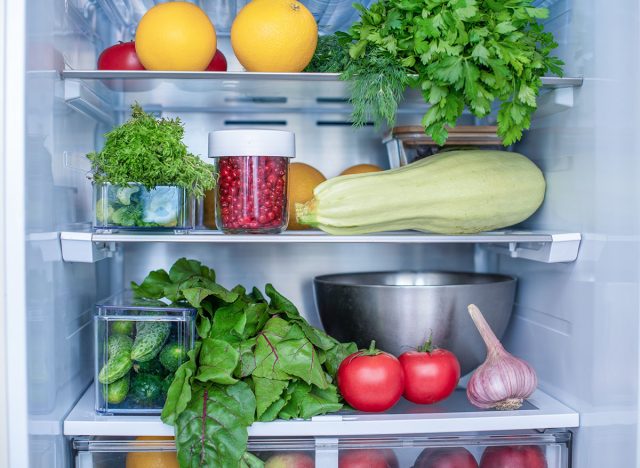
She recommends keeping things simple. "Figure out what you're going to make, figure out whether you've got all the ingredients, and then actually cook that. It might seem like it's not a barrier, but it really is. So, make things simple. Get used to cooking three meals and then repeat those," she says.
6. Stop Drinking Your Calories

"Number six is to stop drinking your calories," she says. While smoothies are "fine," she suggests staying away from fizzy soda, alcohol, or juice. "I don't know what else you'd be drinking that has calories, but anything that you're drinking that is not water can add so many calories in a week. Not only that, it's not gonna be filling, so it's not gonna contribute to you eating fewer calories. Whereas if you eat more calories from broccoli and potato, you will eat less calories from other things."
She Tries to Avoid Alcohol

"When I first started losing weight, I just had a blanket principle for myself that I wouldn't drink juice or fizzy drinks, and it really helped me because I didn't have to make that decision. I would go out or when I was offered something because I just knew I wasn't gonna have it. And I do drink coffee and tea, so this is somewhat nuanced, but the more that you can get your calories from whole foods, the more likely you'll get into a calorie deficit," she says. She stays away from alcohol altogether because it is high in calories and "does tend to remove inhibitions as well. "Normally, when people drink, they tend to eat more calories because that just feels like it's okay at the moment. So I would describe myself as a non-drinker, but very occasionally, if I'm outside of my home and in a social setting, I will have a few drinks, and I'm fine with that, but it's very contextual to it being an unusual thing for me to do rather than something that I'm doing every single night."
7. Use the Scale As Data
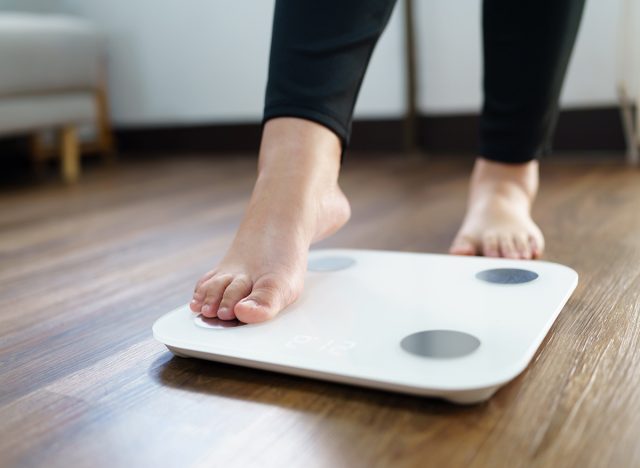
Number seven is a "trigger" for some people, "and that is to use the scales, hop on the scales, and use it as data," she says. "Use it to learn your body's own cycles. Use it to see if you are making long-term progress rather than just day to day that your weight is going up or down because there is so much data to support that as an accountability tool. Daily weighing is phenomenal."
RELATED: I'm a Mother, and These Simple Habits Helped Me Lose 130 Pounds
Weigh Daily
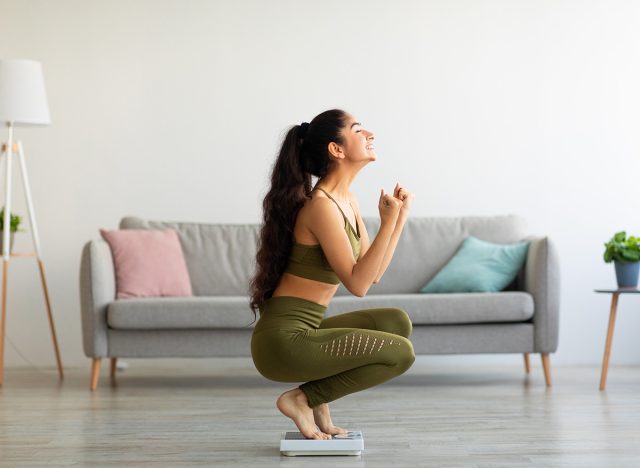
She recommends viewing weight as a long-term thing. You shouldn't stress over the scale on a day-to-day basis. "The cool thing is when you weigh yourself daily, you start to learn your own body's fluctuations, and that becomes useful," she says. "The reason I don't like monthly or weekly weighing is that if you weigh weekly and you go an entire week and you've been doing everything right and then you hop on the scales, if that number's not lower than what you want it to be, then you are going to be demoralized. You may have just hit one random high in an overall downward trend that you would never know about if you hadn't been tracking daily. The same kind of thing can happen monthly." also, you can make changes more easily.
"All you need to do to find your average weight loss is take those seven days or however the cadences that you're looking at and then add them together and then divide them by that number. So if it's seven, add up those seven days and then divide them by seven. That's gonna give you your average weight loss over a week," she says. You can benchmark your progress with this useful Lean Body Mass Calculator.
8. Find a Pre-Made Condiment
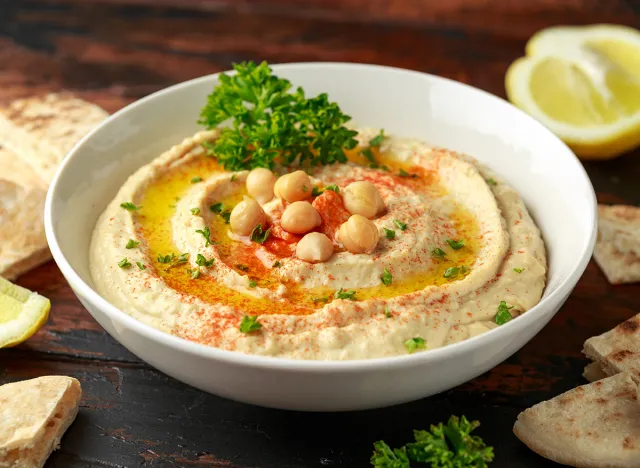
"Number eight is to find a pre-made condiment because we're all about making things easy and light and fun and enjoyable, and you don't need to be slaving away making your own hummus or your own cashew cream," she says.
Condiments Completes a Meal
"Think about how helpful this would be. If you had your core veggies, you had some core starches, and you had a core condiment, how easily could you throw together a meal that you actually enjoyed?" she points out.
9. Have a Habits Based Exercise Goal
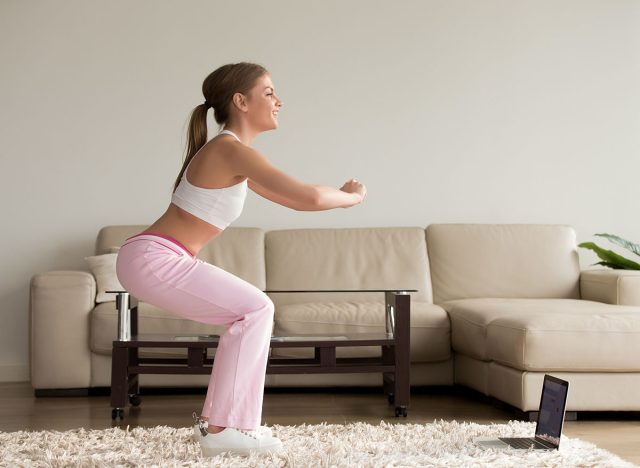
Number nine is "have a habits-based exercise goal," she says. "Exercise has not been shown to help with weight loss typically because even though we burn more calories through exercise, we offset that by moving throughout the day, fidgeting less, and sitting more, and then we end up eating a little bit more because we are hungrier. But one of the best things that you can do for your mental health, your heart health, and really your habits is to exercise."
Set Specific Goals
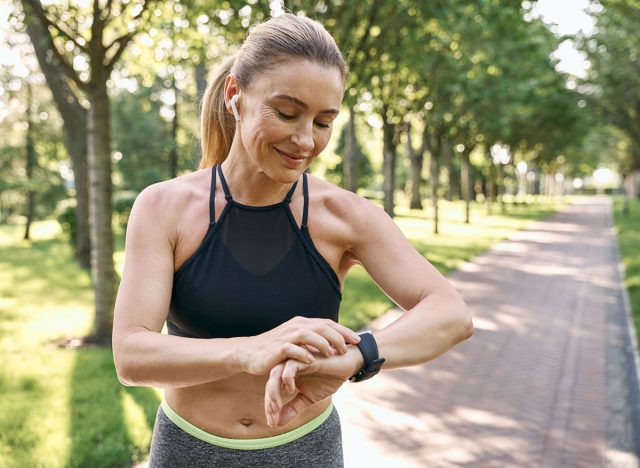
"If you shift your focus from that being about weight loss and instead just see that as a necessary part of your health journey, then it changes the game," she says. "A habit-based system would be, I wanna do 5,000 steps a day, or I wanna run three times a week. I wanna go to the gym three times a week," she explains. "The cool thing about this is you're gonna feel better about yourself because you're staying consistent with something. Your overall health and mood is gonna improve, and that's only gonna make it easier to stick to your diet."
RELATED: The 3 Foods You Should Eat Everyday To Lose Weight and Lower Blood Sugar
10. Don't Miss Twice

"Number 10 is more of a mindset tip, but this is to not skip two days," she says. "This is how you turn something into a habit. You can have a bad day, you can fall off the wagon, but don't ever miss twice."
This Will Help Build Habits
"This has been something that has really helped me to build consistency into my lifestyle because if I know that I need to go to a gym on a Monday and for some reason, I don't go, you can sure as heck bet that I will do everything within my power to make that the number one priority on Tuesday," she says. "This is what stops all-in or all-out behavior or binges that lead to week-long or month-long episodes. This idea of never skipping twice means you can get on track really fast, and you can still see that as a success because you've now changed the definition of success from being perfect, which is impossible to achieve, to being I just won't miss twice. So now you are really gamifying the process of failure and then picking yourself up quickly from that, which is ultimately the skillset you will need to get to your goal." And if you enjoyed this article, take advantage of these 15 Quick Ways to Lose Body Fat Percentage in a Week.





